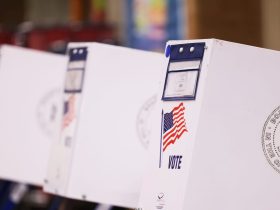The Federal Reserve can probably end its inflation fight now that the U.S. labor market is cooling after generating a historic 26 million jobs in roughly the past three years, according to BlackRock’s Rick Rieder.
“In fact, 26 million jobs is like adding an economy the size of Australia or Taiwan (including every man, woman, and child),” said Rieder, BlackRock’s chief investment officer in global fixed income, in emailed commentary following Friday’s monthly jobs report for August.
The August nonfarm-payrolls report showed the U.S. adding 187,000 jobs, slightly more than had been forecast, but also pointing to an uptick in the unemployment rate to 3.8% from 3.5%.
“Remarkably, 22 million people were hired between May 2020 and April 2022, and 11 million were added to the workforce from June 2021 to May 2023, as the economy has opened up massive amounts of roles for fulfillment,” said Rieder.
He expects wage pressures to ease, he said, and thinks the “economy may now have fulfilled many of its needs,” which should make the Fed feel more confident in “the permanence of lower levels of inflation,” so that it can slow or stop its interest-rate rises by year-end.
Hiring in the U.S. has slowed, except in education and in healthcare services, when looking at private payrolls based on a three-month moving average.
The Fed has already raised interest rates in July to a 5.25%-to-5.5% range, a 22-year high, with traders in federal-funds futures on Friday pricing in only about a 7% chance of a Fed rate hike in September and favoring no hike again at the central bank’s November policy meeting.
Rieder of BlackRock, one of the world’s largest asset managers with $2.7 trillion in assets under management, said he thinks a Fed pause or outright end to rate hikes could calm markets, even if the Fed, as BlackRock expects, keeps rates high for a time.
U.S. closed mostly higher Friday ahead of the Labor Day holiday weekend, with the Dow Jones Industrial Average
DJIA
up 0.3%, the S&P 500 index
SPX
up 0.2% and the Nasdaq Composite Index
COMP
0.02% lower, according to FactSet.
The 10-year Treasury yield
BX:TMUBMUSD10Y
was at 4.173%, after hitting its highest level since 2007 in late August, adding to volatility that has wiped out earlier yearly gains in the roughly $25 trillion Treasury market.
Read on: This hadn’t happened on the U.S. Treasury market in 250 years. Now it has.
Read the full article here













Leave a Reply